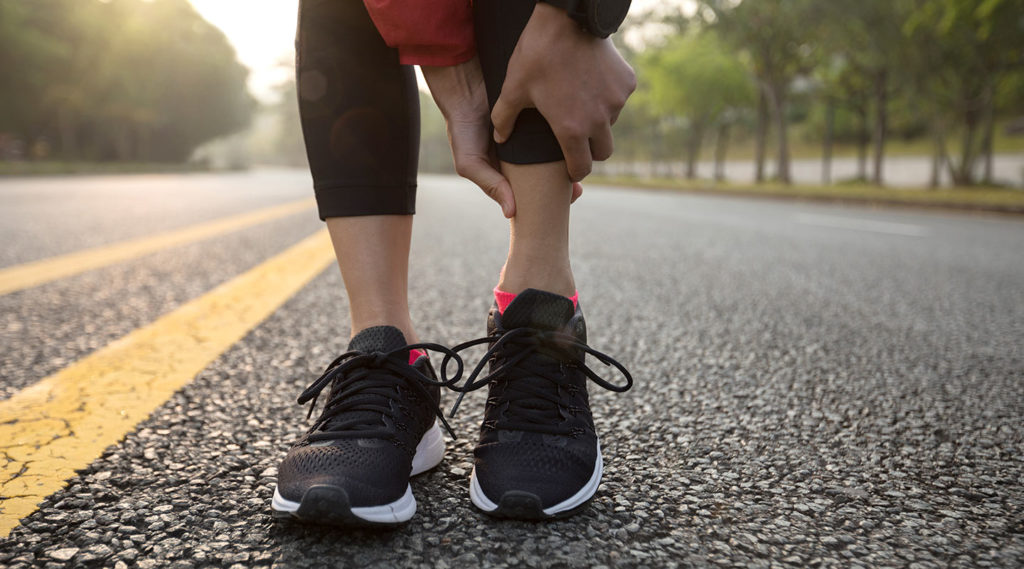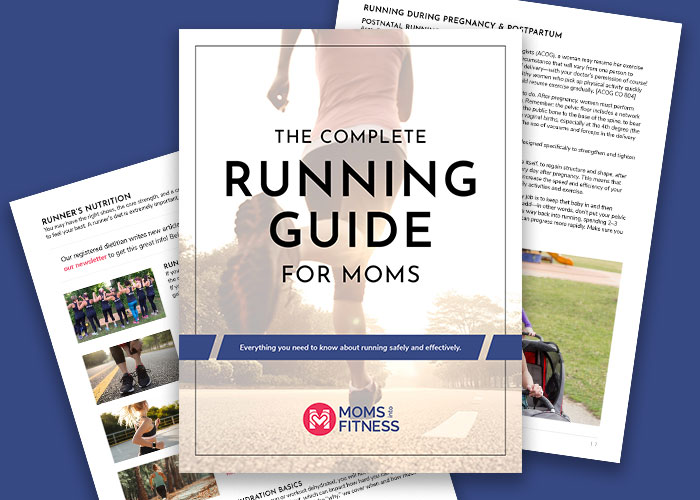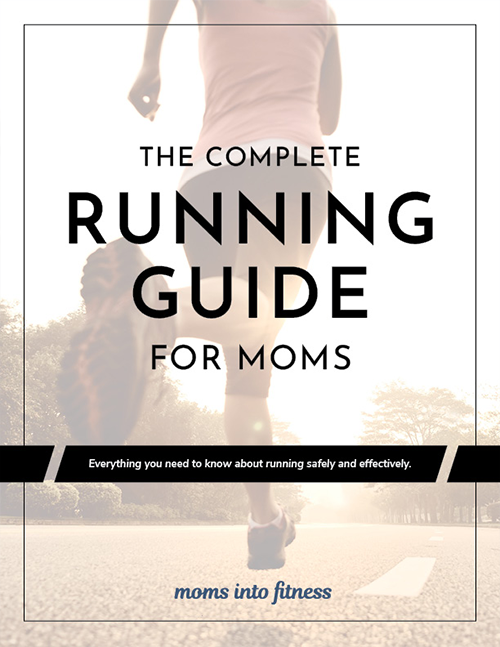
Running is great. It requires no equipment or gym membership. All you need is a good pair of running shoes and time. I like to sync my stride with a playlist…believe it or not, this got rid of my knee pain!
But running also places great stress on your legs. If you don’t take preventative measures—namely focusing on flexibility and strength training—then you’re placing yourself at a high risk of developing an overuse injury.
Common injuries like plantar fasciitis, shin splints, and IT band syndrome can put you on the bench for weeks and sometimes months. So how do you prevent running injuries?
For starters, make sure you are stretching regularly and make strength training a priority. But it goes so much deeper than that. Whether you’re simply trying to prevent injury, or you need to treat an existing one, here are some tips for preventing or treating plantar fasciitis, shin splints and IT band syndrome.
It’s important to note, if you are entering a running schedule with a history of injury, you are twice as likely to sustain a running injury. If you have pain during running, you should see a physical therapist. The 1-on-1 attention can help rehab an old injury, fix muscle imbalances, and get you back to running pain free.
Everything you need to know about running safely and effectively.


Plantar fasciitis is an inflammation of the fascia—the ligament connecting your heel to your toes, supporting your arch. It is common in people who are on their feet often, specifically runners.
If you have plantar fasciitis, you might experience pain in the bottom of your foot when you walk. Typically, plantar fasciitis is usually caused by inadequate stretching of your Achilles and calves, or due to overpronation—your feet rolling inward toward your arch—while running.
Is the bottom of your foot hurting while walking? Then listen to your body and stop running! When it comes to plantar fasciitis, it’s best to seek medical attention from your physical therapist.
Still, when it comes to preventing your plantar fasciitis from worsening—or preventing it all together—these are some things I’d recommend you do:
You’ve had a baby and now you notice your pelvic floor is weak. I understand that runners are a unique and wonderful group and are very driven to return to their sport. Trust me, I know … I am one of you. My hope is that we can help you run with less impact on your pelvic floor. Regardless of if you had your baby/babies via vaginal delivery or C-section, your pelvic floor was impacted.
For 10 months (seriously … whoever said pregnancy was 9 months obviously never was pregnant), your pelvic floor kept that baby in and supported you both. That is a ton of work. Taking time to re-educate and strengthen your pelvic floor before you return to running and while you are running is so very important. It is not normal for you to pee every time you laugh, cough, sneeze, jump. Moms, you are incredibly selfless and put your kiddos’ needs before your own! Please do not put your pelvic floor and core in the back seat, mommas! You do not have to put up with pelvic pain and incontinence.
The pelvic floor’s primary job is to keep that baby in and then afterwards to keep your insides … well … in. Think of it as a hammock that holds your bladder and reproductive organs in and attaches to the front and back of your pelvis. These muscles work all day long. 24/7. They work in conjunction with the TA to stabilize the core. Any insufficiencies in these muscles can cause pain, incontinence, and altered movement. A study by Poświata in 2014, found that 45.54% of the 112 elite female endurance athletes (runners and cross-country skiers) polled suffered from incontinence. You are not alone! But it’s possible to change your fate.
To keep your core healthy during pregnancy and after pregnancy, you should incorporate daily core exercises. You will find these core exercises, as well as the runner’s workouts and much more, in our Moms Into Fitness Studio. Try it free here!
Shin splints is a general term that describes swelling and pain localized in either the outside or middle of your shin. Usually, shin splints are caused by a dramatic increase of stress on your legs due to physical activities.
Beginning runners who try to run too many miles right out of the gate are especially susceptible to shin splints. Still, experienced runners can get shin splints if they dramatically change their workout routine, increasing intensity or mileage too quickly.
The biggest key to preventing shin splints is to gradually increase mileage. Never go from nothing to 40 miles a week right away.
Here are some ways to treat and prevent shin splints:
Your iliotibial (IT) band spans from your hip to your outer knee to your shin. A common overuse injury, IT band syndrome is caused by worn shoes, running on cambered or downhill surfaces, or always running track workouts in the same direction.
It results in swelling of your IT band on the outside of your knee, causing a sharp pain when you bend your knee. As a result, IT band syndrome is often confused with a knee injury, though an MRI can confirm it is IT band syndrome by showing inflammation of your IT band.
IT band problems are especially common in women, as our hips force our knees to tilt inward, putting stress on the IT band.
It’s imperative that you seek medical treatment from a physical therapist if you suspect you have IT band syndrome. If left untreated, IT band syndrome can become chronic. It can also lead to knee pain.
Here are some things that might help your IT band syndrome:
All of the above are great ways to prevent or treat common running injuries. But, honestly, the best advice I can give about running injury prevention is to incorporate flexibility and strength training into your workout routine. Why? Well, runners who stretch and strength train not only reduce their risk of injury, but also improve their performance.
Flexibility gives your body the length and range of motion to be able to move more freely, stride longer, and prevent bad stride habits that can lead to injury. Try our Weekly Schedule for Athletes program to focus on your flexibility and strength.
Strength training gives your body the resilience it needs to withstand the immense stress running puts on your body. It is also proven to improve time to exhaustion and your overall speed.
Too often, though, runners forego strength and flexibility, focusing solely on mileage and pace. This leads to overuse injuries, and stunts your growth as a runner. Instead, you need to have a workout regimen with equal parts flexibility, strength and running. You don’t need to run every day — try cross training with HIIT workouts, strength days and, of course, days off.
For a complete workout regimen with all of those elements, look to our running programs, designed to awaken the athlete within you — giving you the strength, flexibility, and speed you need to improve your running performance, jumpstart weight loss, or just feel great about yourself.